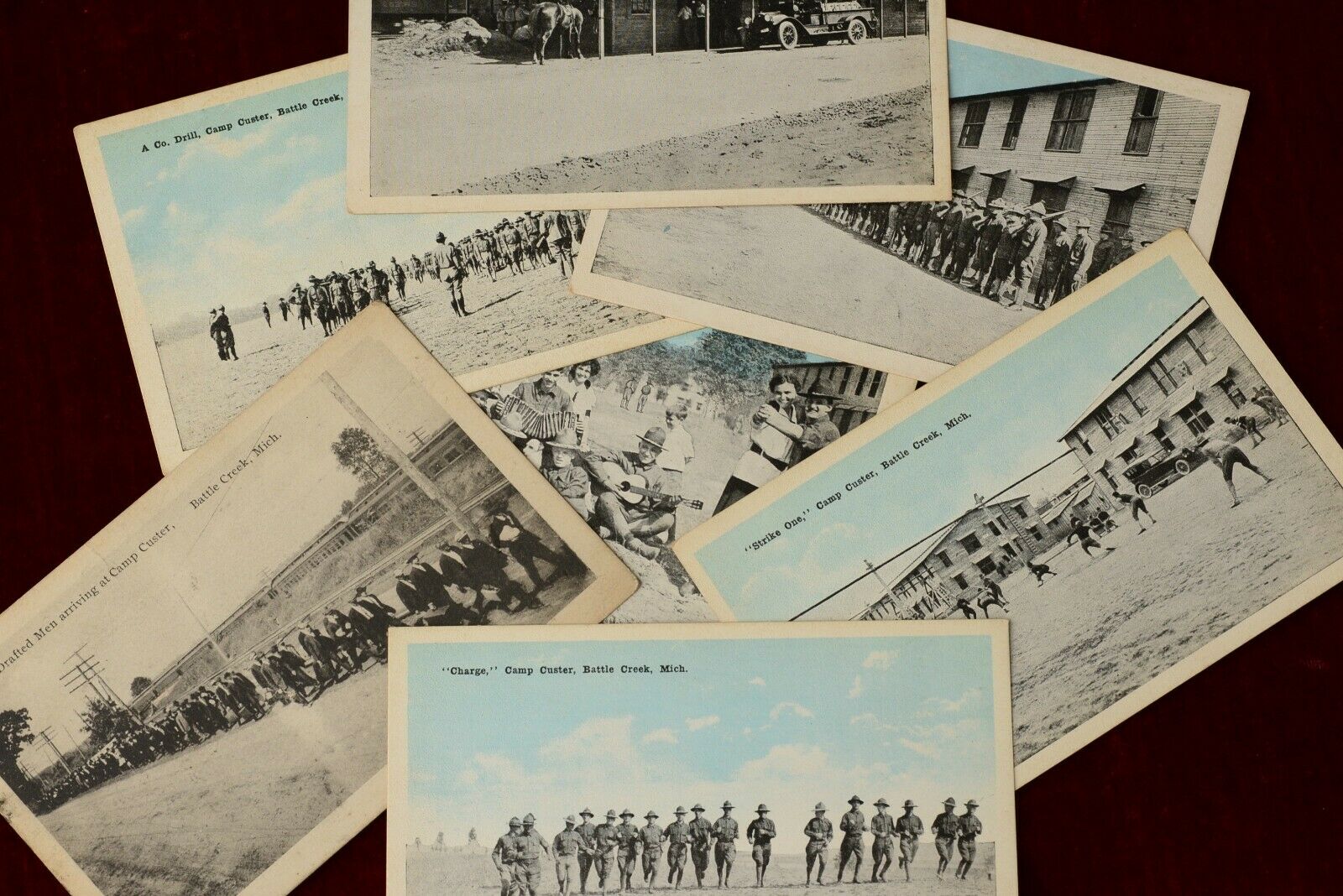CAMP CUSTER, BATTLE CREEK MICH. WORLD WAR 1 PHOTO POST CARDS ~ NICE GROUP
$5.27 (-40%)
NICE GROUP OF 7 CAMP CUSTER, BATTLE CREEK, MICHIGAN WORLD WAR ONE ARMY CAMP STARTED IN 1917 ~ THESE TINTED PHOTO CARDS ARE DIFFERENT SCENES AS SHOWN OF ARMY TRAINING AND LIFE ~ SOME VERY INTERESTING VIEWS ~ PLAYING BASEBALL…R&R WITH LADIES ~ ROLL CALL ~ DRILL ETC…UNPOSTED CARDS SAMPLE OF BACK SHOWN ~ THESE ARE PERIOD CARDS FROM THE ERA ~ ON ONE INTERESTING ONE IS THE MEN BEING DRAFTED AND MARCHING TO CAMP CUSTER WITH TRAIN CARS IN BACKGROUND…..ALL IN GOOD SHAPE THE DRAFT CARD HAS SOME WEAR AND SMUDGE ~ CAMP CUSTER IS STILL ACTIVE ~ THESE ARE FROM WHEN IT STARTED…ALL FOR ONE AND ONE FOR ALL~)
Camp Custer
was built in 1917 for military training during
World War I
. Named after
Civil War
cavalry officer General
George Armstrong Custer
, the facility trained or demobilized more than 100,000 troops during World War I, including 5,000 for
Polar Bear Expedition
as part of the
Allied intervention in the Russian Civil War
.
The camp was first designed and built by civil engineer
Samuel Arnold Greeley
in just a few months to handle 35,000 men.
[2]
In the years following World War I, the camp was used to train the
Officer Reserve Corps
and the
Civilian Conservation Corps
.
World War II
[
edit
]
On August 17, 1940,
Camp
Custer was designated
Fort
Custer and became a permanent military training base. During
World War II
, the post had an area of 16,005 Acres, and Quarters for 1,279 Officers and 27,553 Enlisted Personnel.
[3]
More than 300,000 troops trained there, including the
5th Infantry Division
(also known as the “Red Diamond Division”) which was sent to Iceland in 1942 to protect the North Atlantic convoy routes, and in 1944 landed in France shortly after D-Day.
[4]
The division saw much combat and sustained heavy casualties, particularly at the
Battle of Metz
. In 1943, Fort Custer was the activation point for many Army inductees from Chicago, Illinois and other parts of the midwest. New troops received their equipment before being sent by train to Basic Training or other duty assignments. The primary purpose of the camp was to function as a Military Police Replacement Training Center. Fort Custer also served as a
prisoner of war
camp for 5,000
German
soldiers until 1945.










